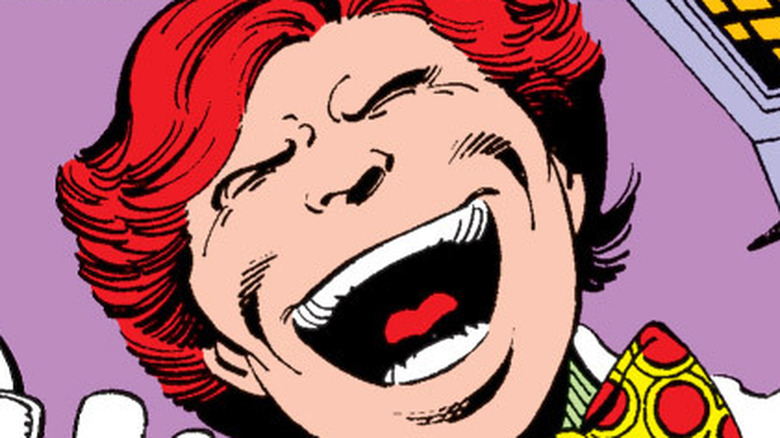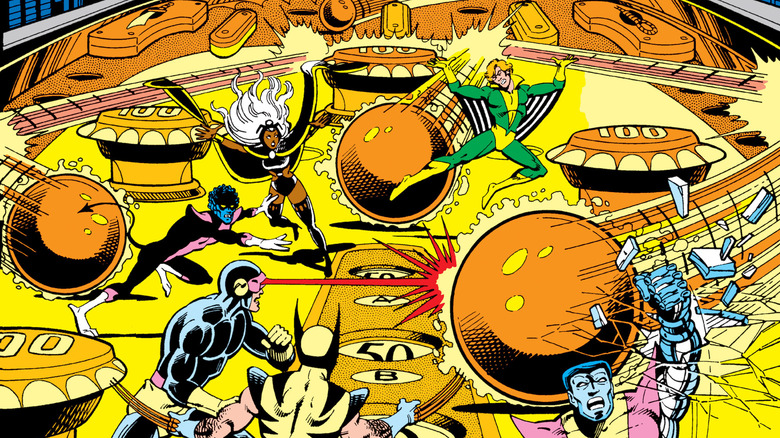The History Of Marvel's Murderworld
Contains minor spoilers for "MODOK"
First, some history: Pop culture was already saturated with elaborate, deathtrap amusement park facilities by 1978. Scaramanga had one in "The Man with the Golden Gun," Michael Crichton had a mess of the things brewing in his head following his directorial debut, "Westworld," and October of that very year would see four superpowered glam rock stars bravely battling the forces of evil in "KISS Meets the Phantom of the Park." So it shouldn't be surprising that Marvel got in on the action with "Marvel Team-Up" #66, an issue that opened with Spider-Man and Captain Britain imprisoned in Murderworld, trapped in a pair of oversized pinballs.
This predicament came courtesy of Arcade, a fresh new Marvel character who, when you think about it, really should have been a Batman villain. Like the Joker, his origin story has never been firmly established beyond frustrating, questionably canonical broad strokes. Like the Riddler, he brings giggling, redheaded glee to his brand of megalomaniacal criminality. And like literally every Batman villain, he's displayed an almost cringeworthy adherence to his preferred modus operandi — in his particular case, building Murderworlds, theme parks made marginally more dangerous than usual through the addition of killer robots and flamethrowers and whatnot.
Murderworld: death, violence, and so many pinballs
Among the two, maybe three well thought-out aspects of Arcade's Murderworld is the fact that it's not a set location, but rather a pop-up fine dying experience. That's right, Murderworld isn't a place, it's an idea — one that the villain has been capable of realizing in all manner of places, regardless of the difficulties inherent in finding local contractors. They've been constructed under the streets of New York City, on tropical islands, and beneath the entirety of Antarctica.
Murderworld's robot-heavy employee roster and colorful theme have made it a favorite setting not just for comic book creators, but also video game developers. A decade and change after it premiered in the comics, it was used as the backdrop for the MS-DOS game "X-Men: Madness in Murderworld," which saw Wolverine, Cyclops, Storm, Nightcrawler, Colossus, and — hoo boy — Dazzler, sent into the bowels of circus-based insanity to save Professor X. It popped up again in 2006's "Marvel: Ultimate Alliance" in a level that was equal parts head trip and cartoon madness.
While comic book fans might find Murderworld iconic, it's seen practically no play on screen, no doubt thanks in part to the hoops a filmmaker would have to jump through to make it work as a believable setting. Why, you'd need a stop motion animated series about a flying head in a rocket chair to make the place seem believable by comparison.
"Marvel's MODOK" is currently available to stream on Hulu.

